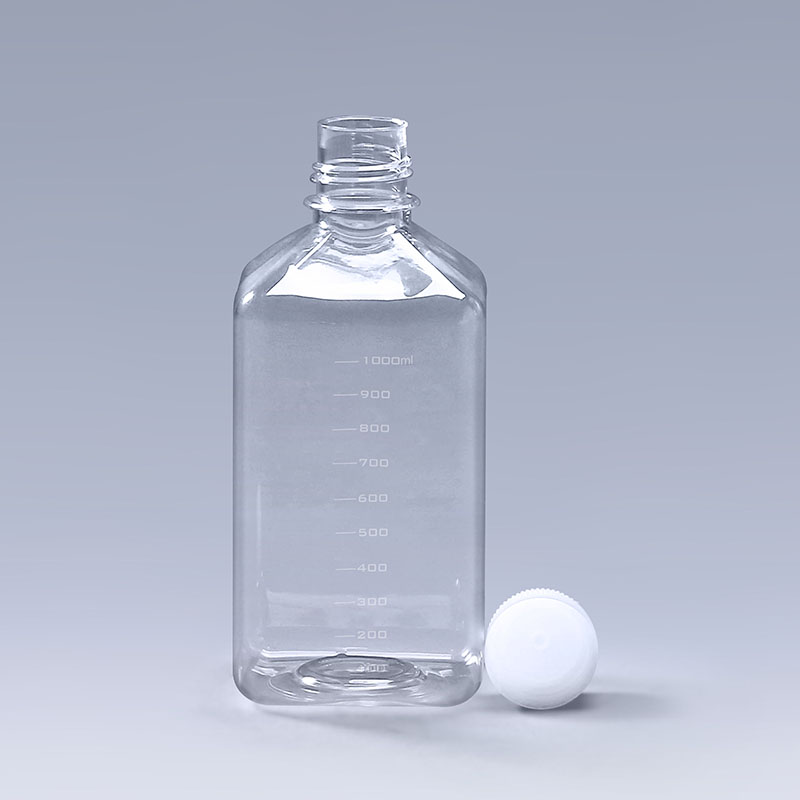
Container selection is critical when storing and sampling active pharmaceutical ingredients and bulk intermediates. Square media bottles, especially those made from PETG, offer a range of benefits that make them ideal for pharmaceutical applications. In this blog, we will explore different media bottle sizes, including 250 mL and 500 mL options, and discuss the advantages of using square media bottles for your storage needs.
Learn about different sizes of media bottles
Media bottles come in a variety of sizes, the most common being 250 ml and 500 ml. These sizes are usually chosen based on the volume of material you need to store or sample. Here is a quick comparison:
250ml media bottle:
· Suitable for small amounts of active pharmaceutical ingredients.
· Easier to handle and transport, suitable for laboratory environments.
· Reduce waste because you can store only what you need.
500ml culture media bottle:
· Suitable for larger capacities, allowing bulk storage of intermediates.
· Cost-effective for high-volume applications, reducing the need for multiple vials.
· Provides a more stable environment for substances that require large amounts.
· Both sizes are designed to meet the stringent requirements for pharmaceutical storage, ensuring your materials remain uncontaminated and potent.
Advantages of square media bottles
Square media bottles are popular in the pharmaceutical industry due to their unique design and functionality. Here are some of the key advantages of using square media bottles:
Space Efficiency: The square shape facilitates better stacking and storage, maximizing the available space in lab and storage areas.
Excellent gas barrier properties: Square media bottles made of PETG have excellent gas barrier properties, which is critical to maintain the integrity of active pharmaceutical ingredients.
Easy Sampling: The square media bottle design makes sampling easier, allowing lab technicians to easily access the contents without compromising the sterility of the remaining material.
These features make square media bottles the preferred choice for many pharmaceutical applications, ensuring your materials are stored safely and efficiently.
Choose the right PETG media bottles
When choosing a PETG bottle, consider the following factors to ensure you choose the right bottle for your needs:
Capacity Requirements: Determine whether you need a 250 ml or 500 ml bottle based on the amount of material you want to store.
Intended Use: Consider whether the bottle will be used for long-term storage or short-term sampling, as this may influence your choice of size and design.
Compatibility: Make sure the materials you store are compatible with PETG to avoid any adverse reactions that could compromise the integrity of your sample.
By considering these factors, you can confidently select the right square sterile media bottle for your pharmaceutical storage needs. Whether you choose a 250 ml or 500 ml PETG media bottle, you can rest assured that your choice prioritizes the safety, efficiency, and effectiveness of your laboratory processes.
The FAI climbed 5.9 percent year-on-year in the first 11 months of 2018, quickening from the 5.7-percent growth in Jan-Oct, the National Bureau of Statistics (NBS) said Friday in an online statement.
The key indicator of investment, dubbed a major growth driver, hit the bottom in August and has since started to rebound steadily.
In the face of emerging economic challenges home and abroad, China has stepped up efforts to stabilize investment, in particular rolling out measures to motivate private investors and channel funds into infrastructure.
Friday's data showed private investment, accounting for more than 60 percent of the total FAI, expanded by a brisk 8.7 percent.
NBS spokesperson Mao Shengyong said funds into weak economic links registered rapid increases as investment in environmental protection and agriculture jumped 42 percent and 12.5 percent respectively, much faster than the average.
In breakdown, investment in high-tech and equipment manufacturing remained vigorous with 16.1-percent and 11.6-percent increases respectively in the first 11 months. Infrastructure investment gained 3.7 percent, staying flat. Investment in property development rose 9.7 percent, also unchanged.
 English
English


















































